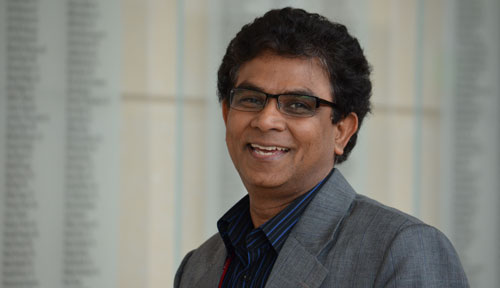Today’s scientists generate huge amounts of data.
Researcher John Chan, M.D., once estimated that it would take 275 four-gigabyte hard drives, or 6,000 complete sets of the seven-book Harry Potter series to hold all the data he had generated from 22 lymphoma biopsies.
So where does he – and other researchers – safely store all that data? And how do they easily retrieve, analyze and back it up?
Answers will come from Ashok Mudgapalli, Ph.D., UNMC’s first director of research information technology.
Since joining UNMC in mid-March, Dr. Mudgapalli has met with researchers across campus to discuss their IT needs.
His goal: Develop a systemwide storage solution.
“Every department has storage issues,” he said. “It’s the same story with small variations, but the same story.”
|
|
“We need a systemwide storage solution,” he said.
An assistant professor of genetics, cell biology and anatomy, Dr. Mudgapalli did similar work as a former lead software architect at First National Bank and Mutual of Omaha.
As he analyzes UNMC’s data storage needs, he also wants to help guide researchers toward smarter purchase decisions by having them ask: What best serves my lab today and in the future? Who is the best vendor? What is the best price? How will my infrastructure needs change as my research grows? How do storage solutions meet patient guidelines for HIPAA? How can I write data storage needs into my grant?
“The amount of data generated today is huge with the genome sequencing,” said Dr. Mudgapalli, who plans to hire several people to assist him. In time, he hopes to create a website with an inventory of what software/hardware is available on campus, as well as a resource listing available journals, personal skills and core facilities.
Until then, storing vast amounts of data is its own science.
